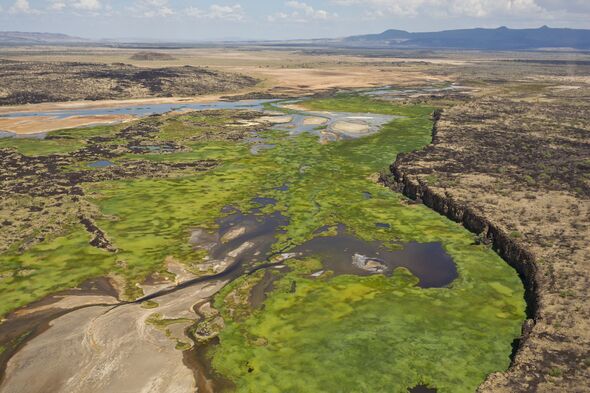Scientists believe shifting tectonic plates are leading to the creation of a new ocean, the world’s sixth.
The geological development results from two land masses slowly moving apart in Africa.
This process could eventually lead to the continent splitting into two, giving the currently landlocked countries of Zambia and Uganda their coastlines.
The solid outer part of the Earth is known as the lithosphere, which is separated into several tectonic plates.
These plates are in constant motion, and their movements can be tracked accurately thanks to developments in GPS and other technologies.
The bi-weekly publication Geophysical Research Letters says recent research backs up claims that a new ocean is forming as the African continent splits up.
The crack is found on the African, Arabian and Somali tectonic plate boundaries.
For the past 30 million years, the Arabian plate has been slowly moving away from the African continent.
The Somali plate is also moving away from the African plate – peeling its way through the East African Plate.
Commenting on the geological development, Ken Macdonald, a marine geophysicist and a professor based at the University of California, said: “The Gulf of Aden and the Red Sea will flood in over the Afar region and into the East African Rift Valley and become a new ocean, and that part of East Africa will become its own separate small continent.”
However, the appearance of the world’s sixth ocean is unlikely to be any time soon.
It is estimated that it will take millions of years for ships to sail on what will be the world’s newest ocean.
Known as the East African Rift system, the crack extends over 3,500 kilometres (2,174 miles) from the Red Sea north to Mozambique in the southeast.
It is a complex system of rifts, faults, and volcanic activity that has been shaping the African landscape for millions of years.
The rift is responsible for creating some of Africa’s most iconic landmarks, including the peaks of Mount Kilimanjaro and Mount Kenya.
It started forming roughly 25 million years ago, but its effects are ongoing.
